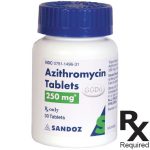
Azithromycin is an antibiotic used to treat various bacterial infections. If you’re considering using it or are currently prescribed this medication, you might have a lot of questions. Here are the most frequently asked questions about Azithromycin, as well as clear and concise answers.

